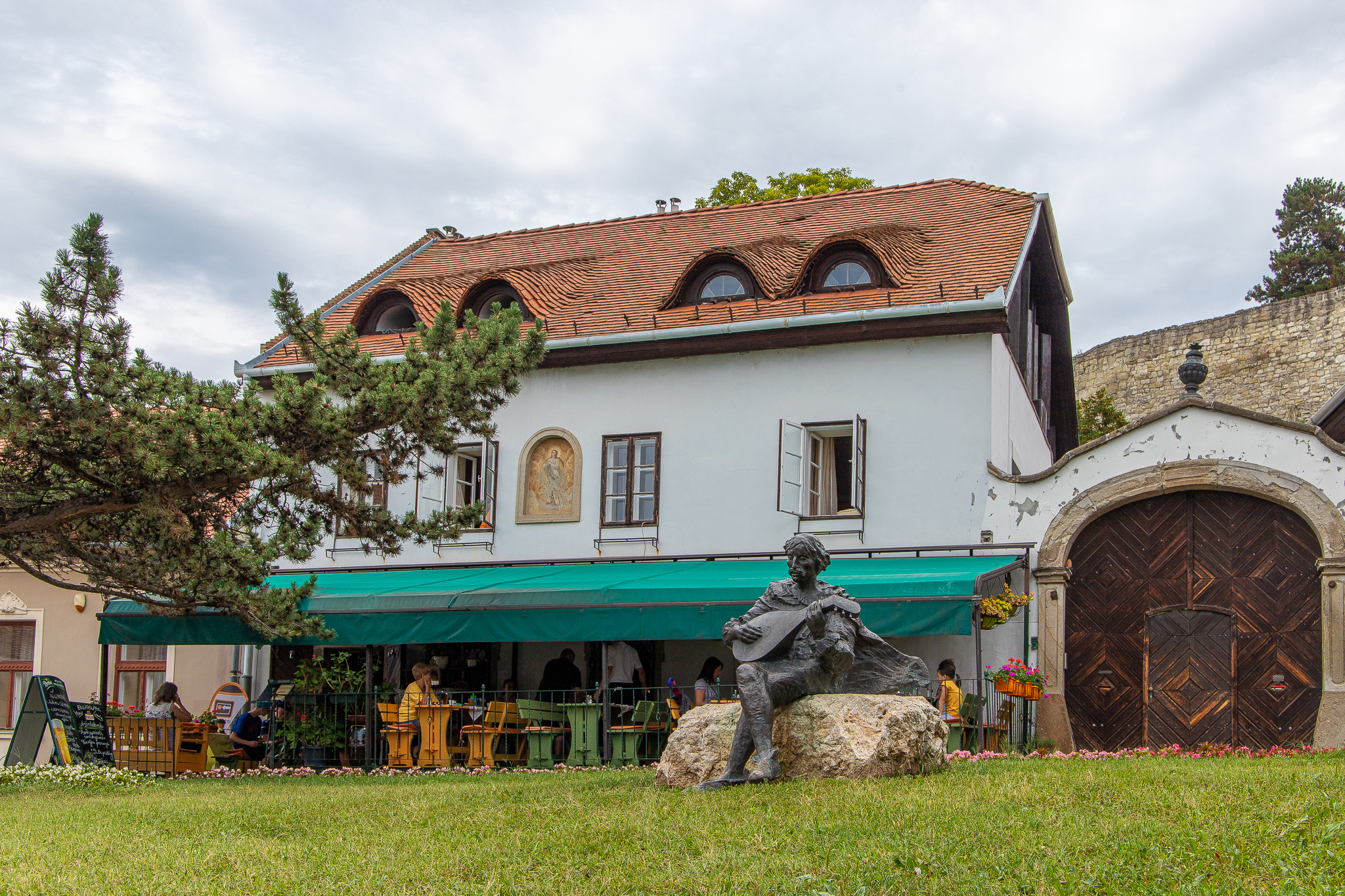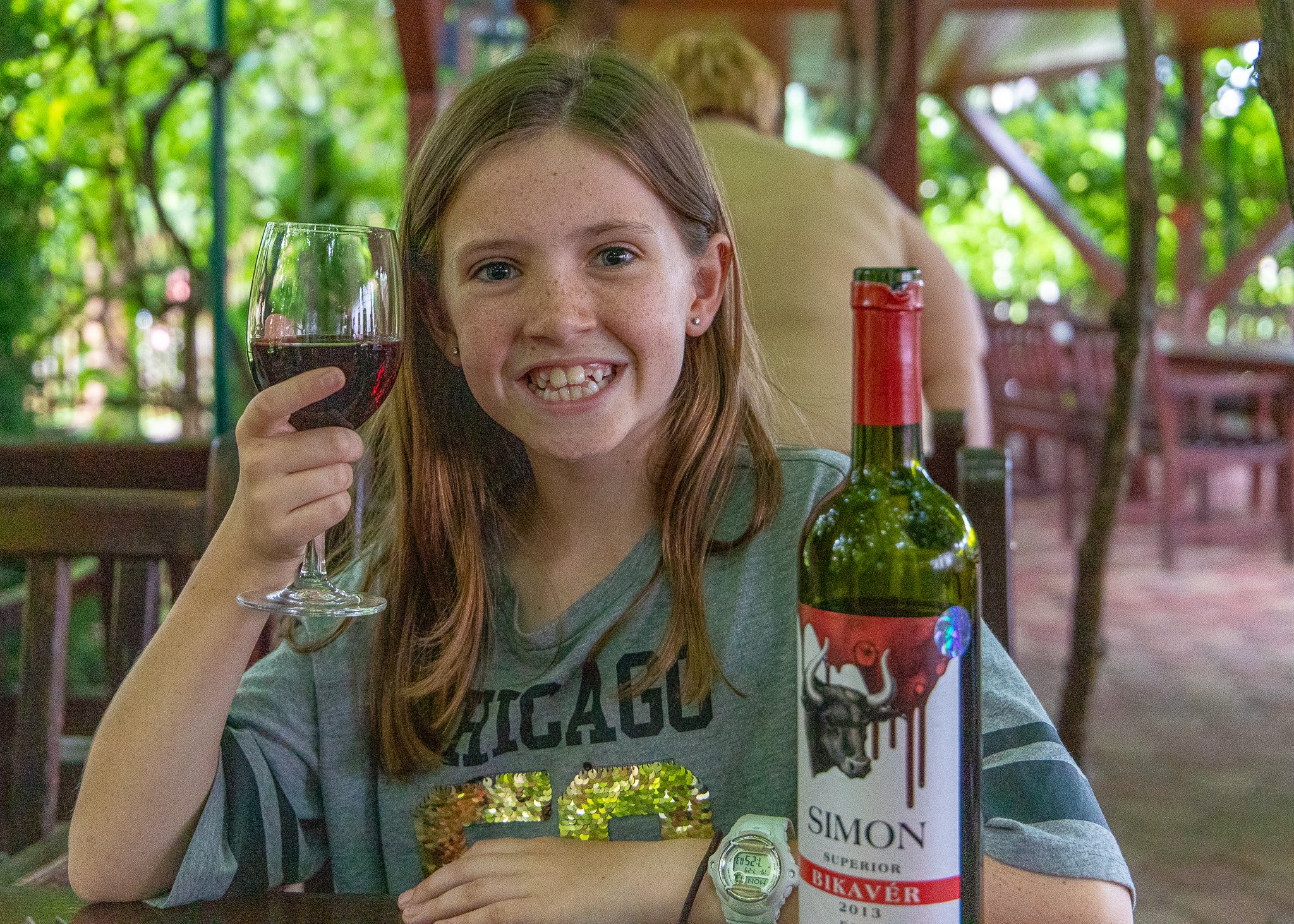In what sometimes feels like a previous life, some 22 years ago, I went running with the bulls in Pamplona during the nine-day festival of Sanfermines. There’s nothing that beats running 825 metres over slippery cobbles being chased by 15 steers/bulls weighing between 500kg and 700kg. You can hear the heavy footfall of their cloven hooves. You can feel their hot, steamy breath on your neck. You can also smell the the pungent smell of the bullcrap in the air. At least you can with most of my retellings of this story, as when I was running I managed to beat the bulls into the arena easily, by at least a minute, having not seen, heard or smelt anything that resembled a bull. I was looking to rectify that embarrassing situation by manning up and heading to Eger in Hungary to drink Egri Bikavér, better known as Bull’s Blood Wine.
Before imbibing, however, we first needed to get some sightseeing under our belts in this extremely popular city. Situated less than two hours from Budapest, the city is famous not only for its red wines and wine cellars in the Valley of the Beautiful Women, but also for the narrow streets that lead to the gorgous old town centre and its impressive castle noted for successfully repelling the 1552 Ottoman invasion.
We started at the neoclassical Catholic Basilica of Saint John the Apostle, situated not far from where the bus deposited us. Built in 1836, each of the Corinthian columns out front reach a height of 17 meters, but the real imposing feature is the dome in behind which stands at a massive 40 metres.
Eger Cathedral
Saint Peter’s statue in front of the Cathedral
After paying our dues to the most important Roman Catholica Church in the area, we wandered down to meet up with Colonel Sanders. At least that was the feeling I had when we ran across this statue en route to Egri Szent Bernát-templom or the Cistercian Church.
I’m guessing the food is finger licken good here
Having passed on the original recipe, we found Egri Szent Bernát-templom. Originally a Jesuit Church named St. Bernard`s, the church was taken over by the Cistercian order in 1747 AD, before they too were banned in the same fashion as the Jesuits a mere forty years later. In the short period that followed up until the church was returned to the Cistercian order in 1989 after the communist regime was toppled, it has burnt down three times and been through three earthquakes. Someone was obviously sending a message as to who the rightfully owners were!
Cistercian Church
Turning down one of the cute laneways, we quickly reached Dobo Square which had the good grace to name a churh in my honour, or possibly some other guy from Padua. This baroque Minorite church is one of the most beautiful churches in Eger and was rebuilt in the late 18th century AD, after the orginal was destroyed by flood water. The Minorites were a branch of the Franciscan Order (founded by St.Francis of Assisi in the thirteenth century) and are supposed to lead lives of simplicity, penance, poverty, and love for the poor. After the Father Superior of the Eger built and paid for the expensive church that now honours the square he was severely reprimanded, but the rest of us get to benefit from his extravagence. You simply have to go inside to realise just how beautiful this church really is.
Church of Anthony of Padua in Dobo Square
Traipsing up to the castle on the hill (aren’t they all), you’re bound to run across the Sebestyén Tinódi statue. The 16th-century Hungarian lyricist became the political poet of his time when the Ottamans invaded Hungary and his works expressed the need to resist the Turks. Nowadays, his statue resides just across from what is supposed to be the best restaurant in Eger, Macok Bistro, and only two minutes walk from the castle entrance.
Sebestyén Tinódi Lantos
Eger’s castle is famous for its central role during the 1552 AD Siege of Eger, in which just over 2,000 defenders held off an invading Turkish army of 35,000-40,000 soldiers. Suffering heavy losses, the Turks gave up on trying to conquer Eger but forty years later besieged the castle again, this time defeating its defenders. So began 91 years of Turkish rule. Our visit to Eger’s Castle was decidedly shorter as we all decided that we’d seen enough castles recently. So, after the obligatory photo of the castle’s walls, we went searching for one of the few remaining signs of prior Turkish rule, the Eger Minaret.
Eger Castle walls
The Eger Minaret was built in the early 17th century and is the most northerly minaret in Europe from the former Ottoman Empire. Standing as tall as the Dome we’d seen earlier at Eger Cathedral (40 metres), the minaret is the only surviving part of what used to be the Djami of Kethuda mosque. 97 steps lead up to the balcony which provide views of Eger city and in 2016, the call to prayer was once again heard from the balcony, having not been made for 327 years.
Eger Minaret with tourists on the balcony taking in the views
Eger is also known for its thermal baths. Having missed out on bathing in Budapest, we weren’t about to do the same in Eger and made sure we put aside time to visit the Eger Open Air Baths. As much an amusement water park as a healing spring, the baths have seven pools with water temperatures ranging from the mid 20s up to the mid 30s. Perfect, if a little crowded and noisy, for both adults and children alike.
One of the adults only pools
Refreshing healing waters
Not surprisingly our kids spent most of the time on the three slides.
Belle enjoying the slide
No hands!
Happy kid
Happy kid x2
Having been healed of all our ailments, we deemed it a good time to go searching for some Bull’s Blood. Legend has it that Egri Bikavér, literally meaning Bull’s Blood of Eger, originated from the failed Turkish invasion in 1552, whereby the defending Hungarian soldiers were served food and a lot of red wine. Having never seen red wine before, rumour began circulating amongst the Turkish soldiers that the defenders were drinking bull's blood to fortify themselves against their attackers. Whilst this makes for a good story, historians can only find evidence of the nickname having appeared about 200 years ago and simply in reference to the deep ruby red colour and thick texture of the wine.
There are a number of wine shops where you can do wine tastings in Eger itself, else you can do what most tourists do and make for Szépasszony Völgy - The Valley of the Beautiful Woman. Two different sources are linked with the name of the valley, the first that in pagan times a goddess (possibly Venus), was worshipped in the sacred valley. The second has it that a beautiful woman lived here in the nineteenth century and while her husband was away fighting as a soldier she sold wine from her cellar by herself. Her beauty was such that men would come from all over the region to admire her and buy her wine. I don’t konw which source is true but can attest to having seen three beautiful woman while I was there. In fairness they have been travelling with me for a while though.
Statue of the Beautiful Woman
There’s over a hundred cellars in the valley, some of which are cut directly into the soft rock behind. Some of the cellars allow tasting for free, however, if you’re not really interested in coming away with a bottle of two, you’re better off paying the ridiculously low price per glass (about $NZ2 for 100ml) and sampling from as many as you responsibly can!
Some of the older cellars on the way down to the tourist part of the Valley
Rules stipulate that Egri Bikavér must contain at least three of the following 13 grapes: Bíbor kadarka, Blauburger, Cabernet Franc, Cabernet Sauvignon, Kadarka, Kekfrankos, Kékoportó, Menoire, Merlot, Pinot Noir, Syrah, Turan and Zweigelt. Given the affordability of the wine we splurged out on the Egri Bikavér Superior which has to have at least 5 out of the 13 recommended varieties, grown in vineyards with lower yields, and requires aging of at least 12 months in wooden cask and 6 months in bottle before before sold.
As the kids had already been on a wine tour with us previously in Georgia, we didn’t think it fair to subject them to another one, so we only sampled a couple of places. I did, however, manage to get my own back on the bulls by drinking my fair share of this famous wine, which can only be produced in the Eger district from grapes grown in the same area. So good was it, that we even stocked up on a couple of extra bottles as we headed ever eastwards.
The 2013 Simon Superior Bikaver made from Pinot Noir, Kekfrankos, Shiraz, Cabernet Sauvignon, Cabernet Franc and Merlot



















